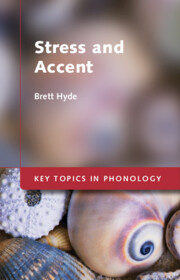Refine search
Actions for selected content:
4 results
1 - Noise and Timing
-
- Book:
- Stress and Accent
- Published online:
- 15 March 2025
- Print publication:
- 27 March 2025, pp 1-33
-
- Chapter
- Export citation
9 - Summary and Conclusion
-
- Book:
- Stress and Accent
- Published online:
- 15 March 2025
- Print publication:
- 27 March 2025, pp 297-310
-
- Chapter
- Export citation
4 - Correspondence: Map and Match
-
- Book:
- Stress and Accent
- Published online:
- 15 March 2025
- Print publication:
- 27 March 2025, pp 111-150
-
- Chapter
- Export citation

Stress and Accent
-
- Published online:
- 15 March 2025
- Print publication:
- 27 March 2025
